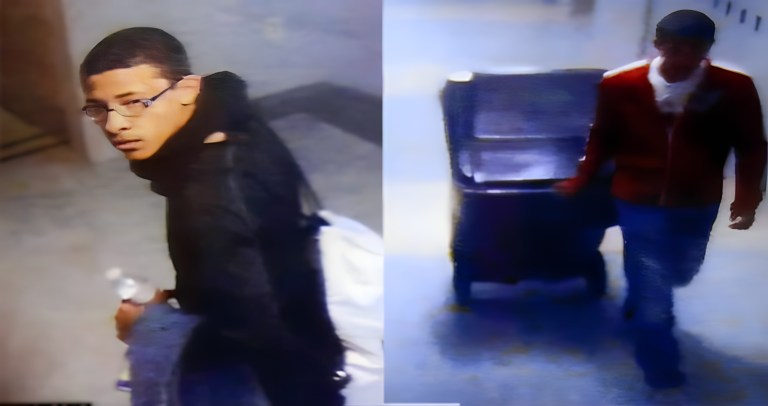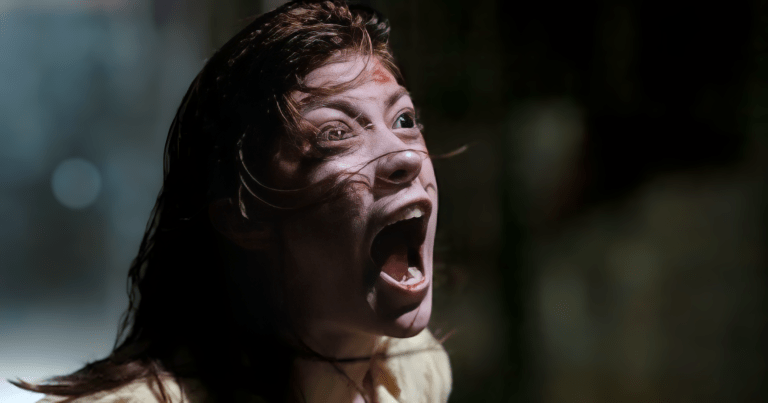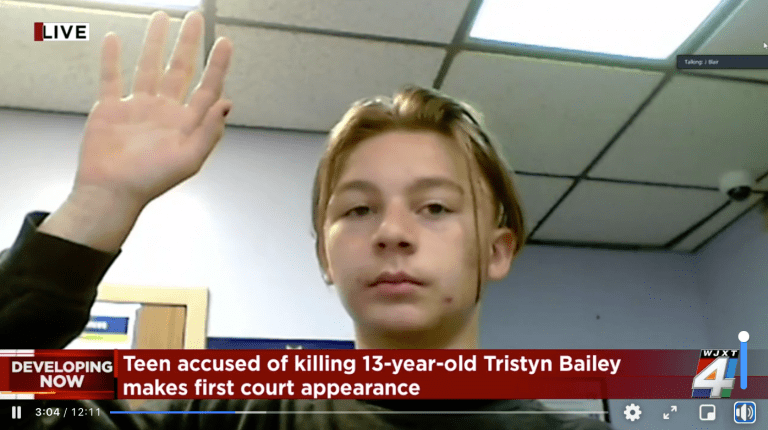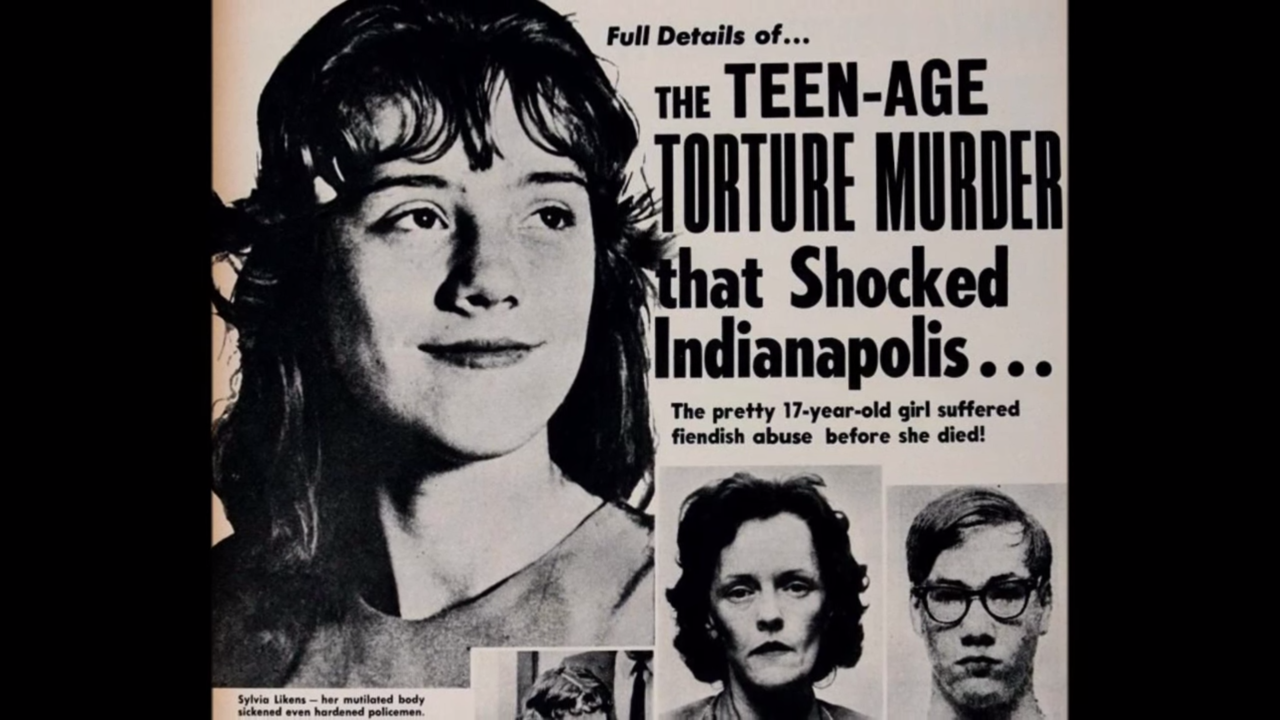
The Horrific, Tragic Death Of 16-Year-Old Sylvia Marie Likens
The most remarkable injuries, by far, were the words in block letters that had been burned directly onto her stomach: "I'M A PROSTITUTE AND PROUD OF IT!" Thus ended one of the most horrible crimes ever committed against a single victim.
By ![]() Denise Noe
Denise Noe
The Torture Killers on Trial
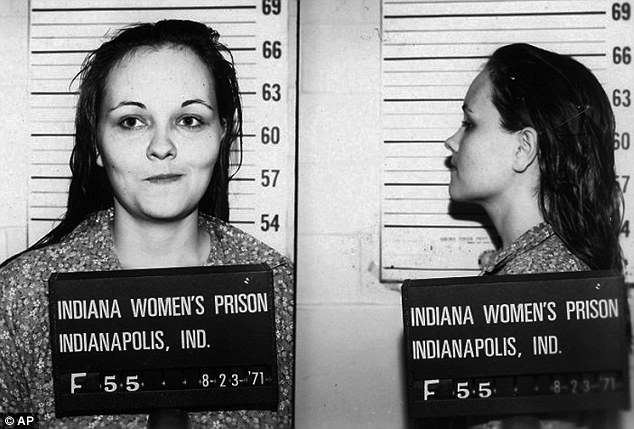
The charges of injury to person were dropped against the younger juveniles. Stephanie Baniszewski’s attorney got her a separate trial and later the murder charge against her was dropped as well.
Standing trial for first degree murder in Indiana’s most sensational case ever were five people: one adult, Gertrude Baniszewski and four minors, Paula Baniszewski, John Baniszewski, Richard Hobbs, and Coy Hubbard. John had only recently turned 13.
Paula’s time in court would be interrupted by a trip to the hospital to deliver the baby with which both she and her mother had so adamantly insisted she was not pregnant. It was a girl. In a display of filial devotion, Paula named her child Gertrude.
The courtroom was jam packed with spectators every day. This was the worst single murder the state had ever known and the largest number of defendants it had ever tried at once. The prosecution was seeking the death penalty for all the accused and it was widely expected that, at least in Mrs. Baniszewski’s case, they would get it. The death penalty in Indiana at the time was carried out by the electric chair.
Many years later, John Baniszewski was to tell a reporter that he actively enjoyed being on trial. He commented, “I took a kind of delight in it. What I really wanted was love but I took the attention instead.”
The judge at the trial was Saul Rabb, a grizzled, balding, and bespectacled jurist known for his tart tongue. Representing Gertrude Baniszewski was William Erbecker, a respected, heavy-set attorney considered flamboyant and personable. George Rice, a Ph.d in psychology as well as a member of the bar, was Paula’s lawyer. John’s attorney, Forrest Bowman, was widely regarded as thorough and dedicated. All of these lawyers worked for their indigent clients free of charge. The only paid attorney, James G. Nedeff, had been appointed by the court to represent Richard Hobbs. Coy Hubbard was, at first represented by Joseph Quill. Quill quit after a week and Forrest Bowman assumed Hubbard’s case as well as John Baniszewsi’s.
The prosecution team was led by Leroy New, a tall, handsome 40-something fellow known for his skill in cross examination. Assisting him was deputy prosecutor Marjorie Wessner. Although women lawyers were still a rarity in those days, the thinking was that it was good to have a female on hand in cases involving women and child defendants and witnesses.
Much of the testimony was sensational and pathetic, often at the same time. Early witnesses included the shocked police officers who had encountered the hideously mutilated corpse of Sylvia Likens along with doctors who enumerated her extraordinary wounds. The star witness for the prosecution was Jenny Likens. She hobbled to the witness stand in a new dress and, in a voice sometimes firm, sometimes halting, and often choked with tears, detailed the horrors she and her sister had suffered. When Wessner gently asked her why she hadn’t sought help, young Likens replied, “I was scared. Gertrude just kept beating me.” Defense attorneys would pursue this point at length. Jenny’s response was always the same: “Gertrude threatened me if I told anyone, I’d get the same treatment Sylvia was getting.”
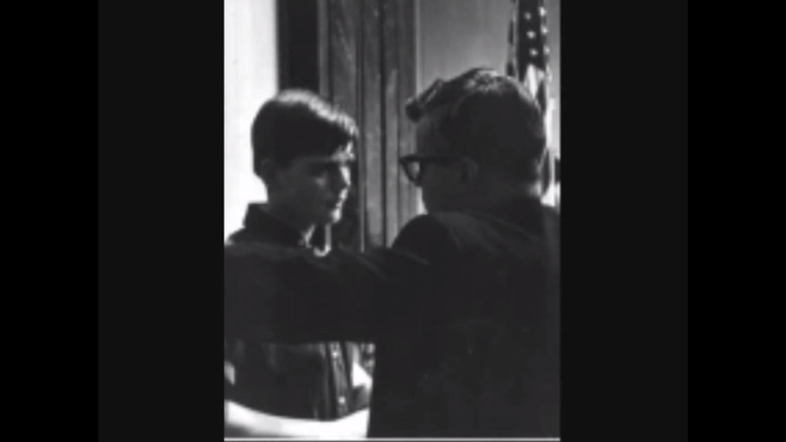
Although tried together, the attorneys for the defendants often worked at cross-purposes. Gertrude Baniszewski’s story was that she had been too sick and chronically tired to know all the terrible things going on in her own home. The children had gone wild on Sylvia without her knowledge. The attorneys for the youngsters tried to shift as much blame as possible onto Mrs. Baniszewski or the other kids.
Mrs. Baniszewski testified in her own defense. She firmly denied all the terrible acts attributed to her. She did not “strike, beat, or kick” Sylvia. Gertrude tried to “paddle” Sylvia, but was too weak and had to call Paula to finish the job. She also recalled slapping a misbehaving Sylvia’s hands. With all the kids in her home, both her own and their many friends, a lot of fights broke out. Mrs. Baniszewski. sometimes tried to break them up, she testified, but was usually too weak and sick even to make the effort.
However, even as Gertrude testified for herself, she often seemed to be testifying against the dead Sylvia. Her story of how she first heard about Sylvia brings up the issue of the girl’s sexual conduct. According to Mrs. Baniszewski’s testimony, a girl came to her door looking for Darlene MacGuire, who often visited the Baniszewski kids. Mrs. B. went to the door with Darlene and the visitor “related to Darlene – she wanted to know whether she knew where she could get hold of Sylvia Likens…the reason this woman was hunting for Sylvia was supposed to have been Sylvia had been out with her husband… Darlene brought Sylvia Likens over to our home two days later and introduced her as the girl this other girl was looking for. That is how I first became acquainted with Sylvia Likens.”
Another way the accused appeared to attempt to indict the victim occurred in her description of how the agreement to board the two girls was made. “Sylvia asked her father if she could stay with us,” Mrs. B. claimed. “…I immediately said, ‘No, I could not take care of you children. I have too many of my own and too many worries and too many responsibilities without adding any more. [Sylvia] said, ‘Well, we can take care of ourselves, we are used to that.’” Just determined to live with the Baniszewskis – at least as Gertrude told it – Sylvia “turned around to her father and said, ‘Daddy, you could pay her for letting us stay here.’”
In an exchange with the prosecutor, the accused insisted that Sylvia was unremittingly rebellious.
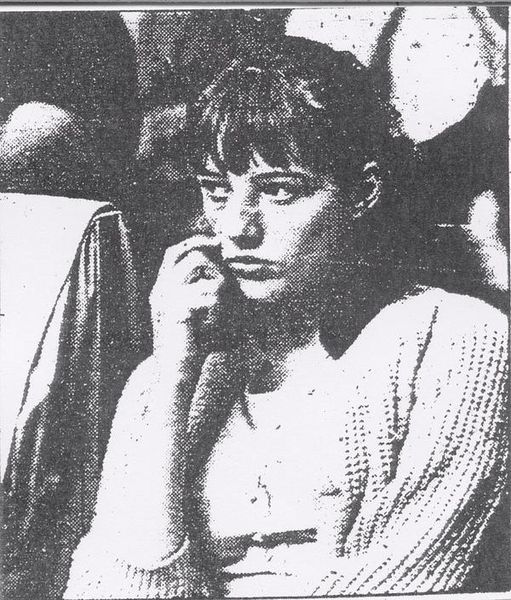
BANISZEWSKI: She would not do anything I told her, no.
NEW: She was disobedient?
BANISZEWSKI: She would not mind me, no.
NEW: Did you whip her for that?
BANISZEWSKI: I believe I testified I whipped her. Or tried to one time.
NEW: How many times was she disobedient to you?
BANISZEWSKI: I told you she would not mind me at all.
NEW: How many times.
BANISZEWSKI: I think I answered your question. I said she would not mind at all.
NEW: Ever?
BANISZEWSKI: Not that I can recall.
To back up Mrs. B.’s story, Marie Baniszewski was called to the stand. Only 11-years-old, Marie was a lovely girl with dark blonde hair cut short and curly bangs over her forehead. She appeared in court in a blue pastel dress with eyelet sleeves. Her expression was understandably somber. Her eyes were blurred with tears as she got into the witness box. Tears streamed down her pale cheeks when Erbecker asked her why she was there. Marie replied, “I’m here to testify to see if my mom killed Sylvia Likens.”
Marie testified that she had seen her Mom hit Sylvia only “when she was bad.” She went on to swear that she had never seen her mother kick the girl, burn her, or mistreat her in any other manner. Marie had seen other kids do all those things but Mom wasn’t present; she was in bed sick.
The next day Marie was cross-examined by New. The elementary school aged child was tearful right from the start. Asked why by the prosecutor, she replied, believably enough, “I’m nervous!”
Marie repeated the denials of the previous day to the prosecutor, whose questions of this fragile witness were relatively low-key. Finally, he took her to the day Sylvia was branded on the stomach. As she had previously, Marie maintained that it was her 10-year-old sister Shirley who had lit the matches for the needle and that her mom was in bed sick, knowing nothing of the mutilation.
New continued questioning Marie until finally the sobbing child shouted, “Oh, God, help me!” Then, Perry Mason-like, the witness for the defense turned into one for the prosecution. Marie had heated the needle; her mother had been there and started the “tattoo.” She had seen Mom burn Sylvia and beat her. She had heard her mother order Sylvia down to the basement.
In his summation to the jury, Erbecker relied on the only possible mitigating factor in Mrs. B.’s defense – mental incompetence – even though her official plea was a simple Not Guilty. “I condemn her for being a murderess, that’s what I do,” Erbecker said, “but I say she’s not responsible because she’s not all here!” He pointed to his head.
The other defense attorneys all tried to shove as much blame onto Gertrude and the others as possible while pleading that the tender ages of their own clients made them less than fully responsible.
Prosecutor New made an impassioned plea for the death penalty for all of the accused. He told them, “The issue here is…law and order. Will we allow such acts? Will we allow such brutality on a human being?… If you go below the death penalty in this case, you will lower the value of human life by that much for each defendant.”
When the verdicts, came back, only Gertrude Baniszewski was convicted of first-degree murder. To the surprise and consternation of many observers, the jury did not sentence her to death. She appealed and was granted a new trial in which she was again convicted of first-degree murder and sentenced to life in prison.
Paula was convicted of second-degree murder. She appealed and was granted a new trial, but passed it up to plead guilty to voluntary manslaughter. She was released after a few years.
The murder charge against Stephanie Baniszewski was dropped as were the injury to person charges and Anna Siscoe, Judy Duke, Randy, Lepper, Mike Monroe.
John Baniszewski, Coy Hubbard, and Richard Hobbs were convicted of manslaughter. Each spent a grand total of 18 months in a juvenile detention facility.
![]()
1985: SLAM Into Action
In 1985, after serving two decades in Indiana Women’s Prison, the parole board voted to grant Gertrude Baniszewski a parole. However, a court ruled that the board’s hearing had not been properly open to the public and a new vote had to be taken.
Two anti-crime groups, Protect the Innocent and Society’s League Against Molestation (SLAM), instantly swung into action. Interestingly, SLAM was founded by Patti Linebaugh, the grandmother of Amy Sue Seitz, a two-year-old molested, tortured, and murdered by convicted child molester Theodore Frank. Perpetrated in California, that crime, like this one, would be called “the worst crime ever committed against one victim in the state’s history.”
Members of SLAM and Protect the Innocent pounded the pavements of Indianapolis seeking signatures of citizens opposed to the parole. They had no trouble getting them even among those who were too young to remember the case because Gertrude Baniszewski’s name had, in the two decades of her incarceration, become that of an Indianapolis “boogeywoman.” They ended up gathering more than 4,500 signatures in just a couple of months. Jenny Likens appeared on television to demand that the notorious Baniszewski be kept behind bars.
Despite the outcry, when the parole board again voted, it was three to two in favor of the parole, exactly as it had been on the first vote. Baniszewski’s conduct as a prisoner had been quite good. She worked in the sewing shop and tended to make favorable impressions upon both prison staff and other inmates. Many of the younger imprisoned women called the child killer and mother of seven by a title most familiar to her: “Mom.” According to the Chicago Tribune, prison psychiatrists “termed Baniszewski a ‘healthy, stable, pleasant and agreeable’ person who wants ‘to try to make up for the past and leave the world a little better.’” At the hearing, Baniszewski teared up frequently and expressed remorse but claimed amnesia about the crime. Indeed, her statement of remorse was enigmatic: “I’m not sure what role I had in it…because I was on drugs. I never really knew her. [But] I take full responsibility for whatever happened to Sylvia.” She left prison December 4, 1985.
The torture-murderer moved to Iowa where she lived out her life under the name Nadine Van Fossan. A long-time heavy smoker, she died in 1990 of lung cancer.
Richard Hobbs, who did most of the dirty work of etching the words into Sylvia and half that of burning the “3,” died of cancer when he was only 21.
Coy Hubbard, who took such excessive revenge again and again for a slur against his ladylove, Stephanie Baniszewski, served time for burglary some years after his brief stint in the reformatory. He obtained work as a mechanic. He was later tried but acquitted for the murders of two men.
John Baniszewski surfaced a few years ago after the Jonesboro, Arkansas tragedy in which a couple of junior high school students gunned down four peers and a teacher. He decided to come forward to say that there is hope for young murderers and that they can turn their lives around. Baniszewski had changed his name to John Blake.
When he spoke publicly for the first time about Sylvia’s death he said he still could not adequately explained why he and the others turned on the girl the way they did. He said that he harbored a great deal of anger over his parents’ marital break-up and the lack of adequate food and clothing for him and his siblings.
Blake acknowledges that his punishment was inadequate to the terrible crime. “A more severe punishment would have been just,” he comments. Blake claims he turned his life around after finding God. However, the Baniszewski family went to a fundamentalist church both before and during the time the unfortunate Likens girls boarded with them. In his adult life, Blake has had no run-ins with the law. He has worked as a truck driver and realtor and served as a lay pastor. He is happily married and the father of three although he is now disabled by diabetes. His vision is blurred and he requires the assistance of a cane or walker to get around.
Stephanie Baniszewski became a schoolteacher. She also married and had kids as did Paula who moved to Iowa and is said to live on a small farm there. It is not known whether or not she had contact with her paroled mother.
The Likens family continued to endure considerable hardship. Jenny Likens enrolled in a Job Corps program in 1966 and later got a job in a bank. She also married. Lester and Betty divorced in 1967. Benny Likens, Jenny’s twin brother began showing signs of severe mental illness a few years after his sister’s hideous death. He became a semi-recluse, tormented by voices only he could hear.
Betty Likens died in 1999 at the age of 71. A search of her keepsakes revealed a yellowed newspaper clipping of Gertrude Baniszewski’s obituary together with a note by Jenny saying, “Some good news. Damn old Gertrude died. Ha ha ha! I am happy about that.”
Benny Likens died only four months after his mother. He was forty-nine and had been mentally troubled for some time. Only 15 when his sister Sylvia died, he served in the army and worked in various restaurants, often as a cook, when he got out. He started hearing voices and was diagnosed as a schizophrenic. According to the afterward in The Indiana Torture Slaying, Lester Likens found out his son was dead when a letter the father had written to Benny was returned marked “Deceased.”
The people of Indianapolis have not forgotten Sylvia. A memorial to her was erected with a poem by Ivan Rogers engraved on a plaque, reading: “I see a light; hope. I feel a breeze; strength. I hear a song; relief. Let them through for they are the welcome ones.”
![]()
Inspired by the Likens Case
The murder of Sylvia Likens has been dealt with in at least five, and possibly six, works. The easiest to get hold of is The Basement by feminist Kate Millett. Prior to starting this book, Millett had put on several sculptural exhibitions inspired by the Likens case.
The Basement is an odd combination of nonsense and brilliance, of fact and fiction together with the author’s personal reactions to the crime. Millett foolishly reads all kinds of cosmic implications into it and projects her own beliefs — pacifist as much as feminist — onto the dead girl in ways that defy credibility.
On the other hand, the book contains much powerful, poetic prose and astute observations that ring real. Millett’s account of the courtroom testimony is riveting. Some of The Basement’s fictionalized passages are both lyrically intense and utterly believable: they “burn a hole in the page” (Nadine Gordimer once said this is the point of fiction) and mind.
Many readers of The Basement, both those who liked it and those annoyed by the author’s fictionalizing, close the book yearning for a “just the facts” account of the case. That account is found in The Indiana Torture Slaying:, a quickie paperback by reporter John Dean (not of Watergate fame) who was briefly called to testify at the trial. Millett got much of her information from this book and she properly gave him credit.
1966, the year when this book was published, was not a good time for books about true murder cases. It was put out by Bee-Line Books, a publisher specializing in cheap pornography with titles like Peekin Place so it never found its proper audience.
Recently reissued by Borf Books, it is good journalism, written in a restrained and compassionate manner. There are problems with it, however. A student of the case whom this writer will call “Craig Kelley” complains that the “author almost canonizes Stephanie,” a girl who, on at least one occasion, helped tie Sylvia up and who might have done more to check the outrages of her boyfriend, Coy Hubbard.
Mr. Kelley makes another good point when he says, “Dean just skips over a lot of really significant things. He reports that GB had only three spoons in the house and then goes on to something else.”
The Likens case inspired a horror novel called The Girl Next Door by Jack Ketchum. Ketchum has turned the calendar back a bit, setting his tale in the 1950s. Pretty Meg and her sister Susan have been orphaned and sent to live with their Aunt Ruth Chandler, a mother of three boys whose home is a magnet for neighborhood kids. The Girl Next Door is a repulsively readable story. Ketchum has given the tale a haunting spin by having it narrated by David, a teenaged boy who watches Meg’s tortures with a combined sense of titillation and disgust. Ketchum believably depicts David’s confusion of conscience and his reluctance to take a stand against the others and stop the show – until it is too late.
Patte Wheat brought the story into the 1970s in By Sanction of the Victim. The story is told from the viewpoint of the victim, young Marjorie who is, along with her little brother Bruce and their dog Rocket, boarded at the home of Florrie Genoud. It is a powerful work of compassion and depth. Co-founders of Parents Anonymous, a group for potential or actual child abusers, give both a foreword and an afterword to the novel. However, the title, suggesting that the tormented child “sanctioned” her own abuse (a suggestion that is not made in the body of the work) is obscene.
It is possible, although not certain, that the Likens case served as an inspiration for Mendal Johnson’s only novel, Let’s Go Play at the Adams’.The parallels are not nearly as strong as in The Girl Next Door and By Sanction of the Victim. Johnson sets his story in affluent suburbia. There is no adult ringleader. A group of kids ranging in age from seventeen to ten tie up Barbara, their 20-year-old babysitter. None of the moral accusations that were leveled against Sylvia – that she was a glutton, a thief, a slanderer, and a prostitute – figure in this novel. However, there is enough resemblance between the Adams’ tale and the Likens murder to suggest a connection. The teenaged Dianne is described as “bony” like Mrs. Wright. The main torturers of Sylvia were two females and three males as is the case in Adams.’ Finally, the murderers burn Barbara with a hot poker before finishing her off. They do not, however, make words out of the marks.
If Johnson was influenced by the Likens case, he, like Craig Kelly, saw it as “the ultimate example of how cruel children can be,” a sort of Lord of the Flies scenario come to life. Mr. Kelly believes that the Likens torture “was about fun (twisted and perverted as it was). The neighborhood kids were having a great time. I think GB was a complete whacko and the kids were the major villains.” After all, Mr. Kelly notes, Mrs. Wright. lived in a house with 10 people in it and only one spoon which convinced him that she was “a total basket case, incapable of raising children or managing life.”
Although not about the Sylvia Likens case, a book called Dear Corinne, Tell Somebody! Love, Annie was inspired by it. It’s author, poet, playwright, and composer Mari Evans, told The Indianapolis Star that she first became concerned about child abuse because of Liken’s horrible death. Evans was deeply involved with the Black Arts Movement of the 1960s and her book is directed primarily at African American youngsters.
A never-published play called Hey, Rube was also inspired by this slaying and that leads us to a most bizarre coincidence. The author of that play, Janet McReynolds, is the wife of the man who played Santa Claus at the Ramsey family’s Christmas party just a couple of nights before six-year-old JonBenet Ramsey was murdered. Two of the factors in young JonBenet’s life that may have played a role in her death were her bed-wetting and the early sexualization of the tiny beauty queen, making the parallels to the murder of Sylvia Likens eerie indeed. ![]()
